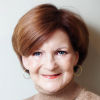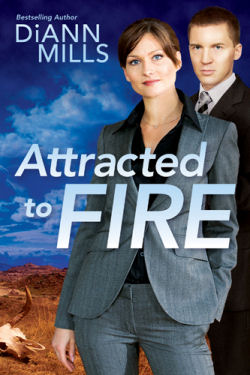
Award-winning author DiAnn Mills is a fiction writer who combines an adventuresome spirit with unforgettable characters to create action-packed, suspense-filled novels. DiAnn’s first book was published in 1998. She currently has more than fifty books in print, which have sold more than a million and a half copies. Her titles have appeared on the CBA and ECPA bestseller lists and have won placements through the American Christian Fiction Writer’s Carol Awards and Inspirational Reader’s Choice awards. DiAnn won the Christy Award in 2010 and 2011. DiAnn is a founding board member for American Christian Fiction Writers and a member of Inspirational Writers Alive; Romance Writers of America, and Advanced Writers and Speakers Association. She speaks to various groups and teaches writing workshops around the country. DiAnn is also the Craftsman mentor for the Jerry B. Jenkins Christian Writers Guild. She and her husband live in sunny Houston, Texas. Website: www.diannmills.com |
|
DiAnn DirectDynamics of Emotion - Part II |
|
|
Last month we discussed the dynamics of emotion and how it’s like an engine additive to our novels. A few years ago, I attended Donald Maass’s workshop on writing powerful emotions. My writing was forever changed. His book The Fire in Fiction incorporates those techniques. I urge you to pick up a copy and study it. Symbolism techniques, especially color, also affect emotion. Red is a warm color that causes strong emotions, from warm and comforting to anger and hostility. Think about these phrases: redneck, red-hot, red-handed, paint the town red, or seeing red. Blue carries a range of emotions from calmness to serenity. It’s been said that many offices are painted blue because people are more productive in blue rooms. Blue can also mean sadness. Anyone enjoy the blues? Blue Monday? How about a blue ribbon day? Green symbolizes nature and growth. The color has a calming effect. It’s been proven that those who work in offices painted green have fewer stomachaches. The color can mean wealth, greed, or jealousy. In the fifteenth century, green represented fertility, and wedding gowns were green. Think about that the next time you select a green M&M. How do these phrases affect you: green thumb, green with envy, greenhorn? Yellow is often described as cheery and warm. It can also be a color of frustration. More tempers are lost in yellow environs, and babies tend to cry more in yellow rooms. But what about the coward who’s referred to as yellow? Or a yellow traffic light? Purple is the color of royalty, wealth, wisdom, and spirituality. It can also symbolize arrogance. How does your character feel about the color purple? Brown is a natural color that invokes a down-to-earth feeling; however, for a person who is isolated on a farm and feels imprisoned, the color brown can symbolize sadness. Pink is a romance color: love, feminine, calming, and soothing. Many book covers of romance novels contain an aspect of pink. Consider the phrase in the pink, or the product Pepto Bismol. Orange is a mixture of red and yellow to create warmth. It means excitement and enthusiasm. Orange is also associated with autumn, the end of the growing season, and the entrance into winter. White signifies purity and innocence. It can also create spaciousness or indicate a sterile environment. How are you using white in your stories to create emotion in your character? Black readily affects our emotions. It means evil, power, death, mourning. In the fashion world, it’s used to create a slimming effect, even sophistication. Consider these phrases: Black Death, blackout, black cat, blacklist, black market, black tie, black belt. Gray is a blend of black and white. In many instances it symbolizes life and death: a gray sky that brings much needed rain to a farmer means life for his crops; but a gray sky that turns menacing and ushers in a tornado means danger. Using effective word choice is a means to creating emotions. Diction is important when choosing words in our stories. The sound of our words ushers in emotion, mood, setting, and genre. Hard consonants create a feeling of harshness. Brisk. Terse. Cut. Kill. Dank. Many words that end with y are light, even fun—pretty, dainty, lovely, perky. |
Words that roll around in the mouth are also fun to write, and we don’t have to be Mary Poppins fans to appreciate them. Remember supercalifragilisticexpialidocious? Words with softer consonants soothe. Add a long vowel sound and we can slow our reader’s heart rate: oh, honey. Those of you who write romance, think of the phrases that speak of beauty, love, longing. The words alone speak of the character’s feelings. The rhythm of our sentences also creates emotive responses. Writers read their work aloud or use text-to-voice software. If a passage seems harsh when we want to create a calm scene, then we need to edit. If our sentences contain a poetic lilt when we intended to show a violent scene, we’re back to the drawing board. Tonya Reiman in The Power of Body Language writes about the seven universal emotions: surprise, fear, anger, sadness, disgust, happiness, and contempt. These emotions are culturally the same. Make sure your characters experience all seven of these emotions. A wise writer becomes a student of body language. The words our characters say with the deepest intensity of emotion are the ones the reader remembers. “Frankly, Scarlett, I don’t give . . .” When we hit a roadblock in writing emotion in dialogue, we need to reach into our reservoir of memories to a highly emotional time in our lives. What was said? Do the words still echo in our minds? Gloria Kempton in her book Dialogue states that angry people don’t make sense. We don’t have the privilege of writing line after line of useless dialogue, but we show through emotions how a character can be out of control. This is another area where the writer can search through her own experiences. Donald Maass teaches that a writer strives for emotion in every sentence. Every word or phrase can twist the emotions of the character and the reader. A best-selling writer places her character into heart-wrenching moments. Be honest. Be bold. Make the emotions raw. Hold back nothing. Then stand back and admire the best scenes you’ve ever written. Emotive conflict. Where will it take you? 
|
|
|
|
|
|
|








